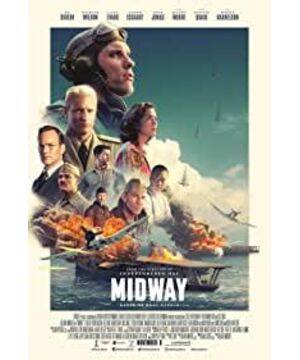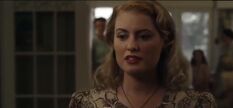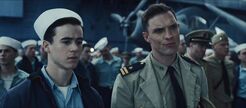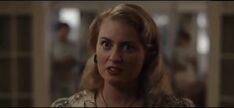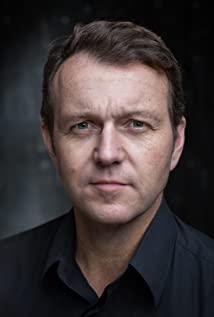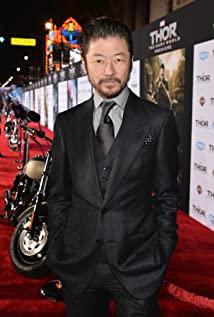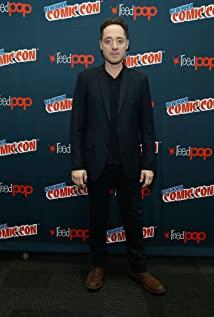There is a small island in the middle of the Pacific Ocean with an area of only 4.7 square kilometers. It is 2,800 nautical miles away from San Francisco in the United States and Yokohama in Japan, hence the name - Midway Island.
Cause of battle
At the time of World War II, on December 7, 1941, Japan attacked Pearl Harbor. The Americans could not swallow this breath and were ready to plan a counterattack. So the "Doolittle Air Raid Plan" began to be implemented, and the plan content was to bomb the Japanese capital Tokyo.
In the end, although it was far less than the loss of the United States at Pearl Harbor, it made Japan realize that it must put the sea defense line on the premise.
Therefore, it was decided to lead the navy by Yamamoto to attack Midway Island, which has a special geographical location, in the first week of June, and then threaten Hawaii, lead the U.S. fleet out for a decisive battle, and wipe out the military power of the U.S. Pacific Fleet in one fell swoop.
intelligence acquisition
In war, the acquisition of intelligence is an important condition for victory. On the eve of Japan's preparation to capture Midway, the U.S. Pacific Fleet Operational Intelligence Team used radios to discover that the letters "AF" often appeared in the encrypted telegrams transmitted between Japanese ships. The United States has produced many different speculations about "AF". Washington believes that it represents "Pearl Harbor", and the Army believes that it represents "San Francisco".
As a result, in early May, the U.S. military intercepted the telegrams sent by two Japanese reconnaissance planes reconnaissance on Midway Island, and the word "AF" appeared in them, so the U.S. military analyzed that "AF" should refer to "Midway Island". Through the comparison of the captured Japanese Pacific charts, the horizontal line of the coordinates of Midway Island is marked as "A", the bus is "F", and it is basically determined that "AF" is "Midway Island".
In order to further confirm this speculation, the U.S. military decided to use the intelligence team to send a secret message to the U.S. Air Force Command on Midway Island, asking them to send a "Midway Island Freshwater Equipment Failure" telegram to the Fleet Command in clear code. A few days later, the words "AF freshwater equipment malfunctioned" appeared in the intercepted Japanese naval telegrams by the U.S. military. This time the US military concluded that the target Japan was preparing to attack was Midway Island.
After that, the U.S. military once again obtained a message sent by a Japanese naval officer. Based on this, the US military deduced that the time of Japan's attack might be June 4, and it took the initiative in this war.
The fighting power of both sides
In terms of combat aircraft carriers, the Japanese side has four ships, "Akagi", "Soryu", "Hiroyu", and "Kaga", while the United States has only two ships, "Enterprise" and "Hornet". The "Yorktown", which was damaged in the naval battle, was quickly repaired for combat.
It was originally estimated that it would take two weeks to fully repair, but coach Nimitz said that he would only be given 72 hours. Therefore, the number of combat aircraft carriers between Japan and the United States on Midway is: 4 to 2 plus 1 damaged aircraft carrier.
war begins
Although the area of Midway is small, there is an airport on the island. Having an airport means that planes can take off and land. That is to say, Midway can be regarded as an immobile aircraft carrier.
As a result, at 4:30 a.m. on June 4, 1942, all four Japanese aircraft carriers advanced to the vicinity of Midway Island to prepare for a surprise bombing of the island. At the same time, put the plane to scout the position of the US aircraft carrier.
The U.S. military began to release reconnaissance planes as early as 4 o'clock, and found the Japanese aircraft carrier around 6 o'clock. The plane at Midway immediately took off to attack, but was intercepted by Japanese escort fighters.
On the Japanese side, the plane that attacked the island was thrown into the air, and the reconnaissance plane has not yet found the location of the U.S. aircraft carrier. At 7:15, Commander Nagumo Tadashi ordered to unload the torpedoes in Akagi and Kaga, which were originally going to attack the US aircraft carrier, and replace them with bombs to prepare for the second wave of bombing the island. Unexpectedly, in the middle of the reload, at 7:28, the Japanese reconnaissance plane sent back a report and found the location of the US aircraft carrier. So I hurriedly switched back to torpedoes to attack the aircraft carrier. This series of operations resulted in wasting a lot of precious time.
At the same time, on the U.S. side, fighter planes launched attacks on the discovered Japanese aircraft carrier one after another. After 9 o'clock, the torpedo attack aircraft that took off from the Enterprise and Hornet flew towards the Japanese aircraft carrier, only to be shot down again by the Japanese.
Until 10:22, the U.S. military once again dispatched 33 bombers to attack the Japanese Kaga, and three fighters turned to attack the Akagi. Subsequently, 17 fighters on the Yorktown went to attack the Soryu. At this time, the Japanese fighters were fighting at low altitude and had no time to respond.
So the three Japanese aircraft carriers were destroyed, leaving only the Hiryu.
At 10:54, the Japanese counterattacked and prepared to fight to the death, and all the remaining fighters on the aircraft carrier were dispatched. The USS Yorktown was successfully attacked at 11:59. However, this attack did not cause the Yorktown to be completely damaged. After struggling to repair it, it resumed operation again at 1:40 pm. At this moment, the second wave of Japanese Hiryu fighters arrived, completely destroying Yorktown.
The U.S. military, at 2:45 p.m., the plane spotted the Hiryu. At 3:30, the remaining two U.S. aircraft carriers released fighter jets to attack Hiryu. At 4:45, the fighter plane arrived, and after some battle, the only remaining aircraft carrier of the Japanese army turned into fireworks.
post-war influence
The Battle of Midway, known as the turning point of the Pacific War, was the famous battle of less than more in World War II.
As early as 1976, the United States filmed the film "Battle of Midway" on this theme.
And what we are all familiar with is "Battle of Midway" directed by the famous doomsday director Roland Emmerich and released in mainland China in 2019.
The film fully tells the process from the Japanese attack on Pearl Harbor to the defeat of Japan at the Battle of Midway.
However, the film is still mainly described from the perspective of the United States. The Japanese side has very little brush and ink. If the scenes of the two sides are averaged to show the process of fighting wits and courage between the two armies of the United States and Japan, the film may be improved to a higher level.
View more about Midway reviews


